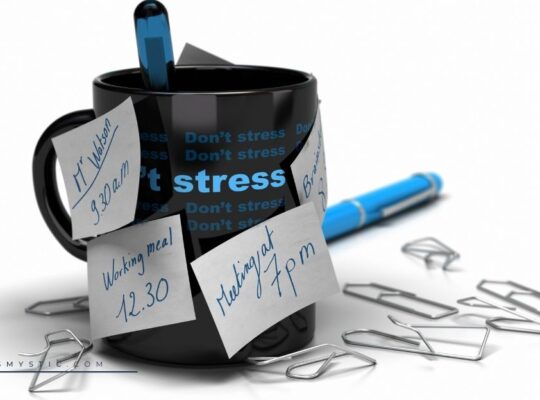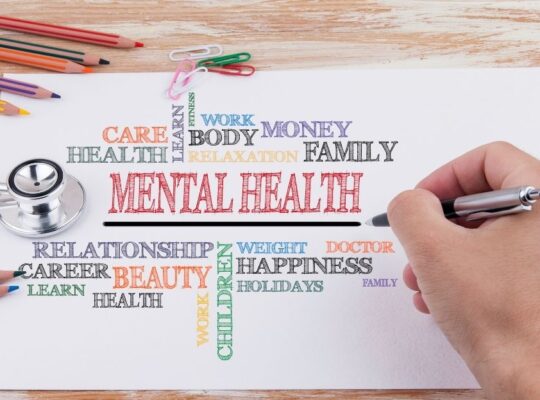What Is Sadness
According to the Mayo Clinic…
“Feeling down or unhappy in response to grief, discouragement, or disappointment; if ongoing, may indicate depression.”
According to Psychology Today…
“Sadness is often mistakenly confused with depression. Unlike depression, sadness is a natural part of life and is usually connected with certain experiences of pain or loss or even a meaningful moment of connection or joy that makes us value our lives.”
According to Very Well Mind….
“Sadness is an emotional state characterized by feelings of unhappiness and low mood. It is a normal response to situations that are upsetting, painful, or disappointing. Sometimes these feelings can feel more intense, while in other cases they might be fairly mild.”
According to Thesaurus, synonyms for sadness include:
- Heartbroken
- Melancholy
- Mournful
- Somber
- Sorrowful
- Sorry
- Bereaved
- Blue
- Cheerless
- Dejected
- Despairing
- Despondent
- Disconsolate
- Distressed
- Down
- Down in dumps
- Down in mouth
- Forlorn
- Gloomy
- Glum
- Grief-stricken
- Heartsick
- Heavyhearted
- Hurting
- In the dumps
- Low
- Low-spirited
- Morose
- Sick at heart
- Troubled
- Weeping
Sadness can be caused by just about anything.
You might be disappointed by something that happened, feel lonely after the ending of a relationship, be upset about losing your job, or even feel unhappy about the direction your life is headed in.
- Though it’s sometimes difficult to address, sadness is a completely natural emotion.
- Sadness is a part of life.
- Sometimes, it just takes a little extra time to let the sadness sink in, feel the effects of it, and then take the steps to cope with it.
- Sadness can be mild, or it can be severe and very intense, such as that which is felt after losing a loved one or going through a break up.
Not addressing your sadness in a healthy way can be detrimental to your mental and emotional health. So, we’re going to go over different types of healthy coping strategies that you can use to address your sadness right now.
Why Healthy Coping Is So Important When Faced With Sadness
Dealing with “negative” emotions like sadness is a basic part of life. It’s tempting to act on those feelings, but that rarely fixes the problem that created those emotions in the first place. In fact, acting rashly generally leads to more problems.
It’s pretty common for people to put their sadness or other intense emotions on the backburner. While this might ease your mind right now, it doesn’t necessarily mean that these emotions aren’t still building up within you.
Often, people deal with sadness by denying there’s a problem, withdrawing from friends, self-harming through abuse of substances, and often by putting others down to feel better. These aren’t healthy coping mechanisms. They are destructive and self-sabotaging, which highlights just how important it is to have healthy coping mechanisms to turn to when you are faced with sadness.
The longer you put off coping, the more events and emotions will pile up. If left unaddressed for too long, your intense sadness might eventually transition over to a mental health condition like Major Depressive Disorder.
Coping with your emotions as they happen is an incredible way to acknowledge your emotions and work through them in a timely manner. That way, you can get back to your normal everyday life much sooner.
Coping skills are what you use to help minimize, deal with, or tolerate negative emotions or stressful situations. Managing your sadness and stress will help you feel better and can influence your performance in life as well. Unfortunately, coping skills are not all equal. As noted above, there are negative coping mechanisms that self-sabotage and drag you down and there are healthy ones that help you face sadness head-on.
When faced with sadness, ask yourself whether you need to change the situation or find a more effective way of coping with it. From there, you can determine what coping strategy is right for you.
There are two types to choose from, emotion-based and problem-based coping.
Emotion-based coping
Emotion-based coping is ideal if you need to deal with sadness where you can’t change the situation or have no control to do so.
Problem-based coping
Problem-based coping is ideal if you can change the situation.
While there is no one way to proceed, there is a wide range of healthy coping skills you can turn to, to overcome your sadness. The negative coping skills many people choose only lead down a dark path that leads to more sadness and can destroy what you have worked for in life.
If you want to overcome negative emotions, if you want to maintain a healthy overall sense of wellbeing, then you need to learn how to cope in healthy ways.
Healthy vs. Unhealthy Coping Strategies
A healthy coping strategy is one that doesn’t impact your health negatively in any way. That means you’re not endangering your mental, emotional, social, or physical wellbeing.
When successful, healthy coping mechanisms can help you to reduce intense emotions (like sadness and anger), come to terms with them sooner, and then work your way through them.
Coping Strategies to Avoid
Though coping is important, not all coping strategies are effective or healthy. Let’s go over some of the more dangerous coping strategies according to the U.S. Department of Veteran Affairs.
- Eating behind emotions: Emotional eating is when you eat not because of hunger but because of some uncomfortable emotion, and often sadness is that emotion. Typically, emotional eating revolves around high fat sugary foods that mimic the effects of drugs on the brain by offering instant gratification in a flood of feel good hormones. In reality, this does nothing to help your sadness, nor is it a healthy way to cope with sadness. In fact, it only makes matters worse. First, you are harming your health, second you are creating and instilling negative coping habits and third, oftentimes following such an eating session comes a lot of guilt which only adds to an already emotionally vulnerable you.
- Drug & substance abuse. You might be looking for an easy escape or just some help falling asleep at night, but drugs and substances are both highly addictive. Plus, they might ease your sadness right now, but the effects will wear off in just a few hours.
- Avoiding people or triggers. The last thing you want right now is to be reminded of what’s making you upset. At the same time, avoidance tactics might lead you to self-isolate, which can set your mental health back even further.
- Anger or violence. It’s completely normal to be so mad that you just want to hit something, but actually doing it is a whole other story. Taking your anger out on other people or inanimate objects can cause physical injury or lead to legal consequences.
- Self-harm. A lot of people take their emotions out on other people, but it can be even more dangerous when you physically take them out on yourself. Cutting, burning, or even hitting yourself are all physically dangerous and don’t soothe your sadness.
These strategies are both easy and impulsive, but they never seem to work long-term. That’s why it’s so important that you find a healthy coping strategy to handle your sadness before it gets too out of hand.
The Best Ways To Address Sadness
Now that you know which coping strategies are not the healthiest for coping with sadness, we want to give you plenty of options and strategies to choose from. So, here are some of the best ways to address your sadness and improve your mental health.
Self-Expression
Self-expression can mean a lot of things. Generally speaking, self-expression is any method of expressing yourself and your current emotions, usually through some type of art form.
It’s a great way for you to think about and acknowledge your current level of sadness and express it in a way that you just can’t seem to do with words. Let’s talk about how you can use self-expression to address your sadness.
- Listening to music. One of the best ways to handle your current sadness is by listening to music that expresses what you feel. So, you might listen to hardcore rock if you have pent-up anger or smooth jazz if you’re trying to work through sad emotions.
- Creating music. Even if you don’t have any musical abilities at all, you can still create music to express what you feel. You might want to write a song about what you’re currently feeling or even try learning to play a new instrument.
- Painting or drawing. The best thing about visual arts is that it doesn’t always have to make sense to the outside world or look absolutely perfect. You can use colors and shapes to describe what you’re feeling instead.
- Writing. If you know what you’re feeling, but just don’t have anyone to say it to, you might want to try writing in a journal. Yet, you can also express your sadness through your own poetry (it doesn’t have to rhyme).
Basically, you just want a way to get your emotions out when you just can’t seem to get them out in words.
Allow Yourself to Feel
For some reason, a lot of people think that it makes them “weak” to show their emotions. That’s especially the case for men, who are often told by society to keep their emotions under wraps and represent themselves as strong to the outside world.
Yet, sadness is an emotion that begs to be felt. So, don’t be afraid to show your emotions and let them out as they come.
Don’t be afraid to cry if you want to cry or yell if you want to yell. After all, the longer you hold intense emotions inside, the more they begin to build up and become a lot more overwhelming, creating a larger issue in the long-term.
Just remember that your emotions are what make you human. Don’t deny yourself the chance to cope with your sadness.
Talk to Someone You Trust
Have you ever been so overwhelmed with your emotions that you just needed to talk about them with another person? Venting about your emotions is an incredible way of acknowledging your sadness and begin the coping process.
Sometimes, you just want someone to listen.
You just want to make sure that you’re turning to someone you really trust. Guarantee that this is a person that’ll listen to you without judgment and give you advice on what to do in your current situation, but only if you ask for it.
You might want to turn to a teacher, a boss, a coworker, a friend, a family member, or even a stranger that has no idea who you even are. Remember that not all friends are trustworthy, so don’t just open up to the first person who asks what’s wrong.
Sometimes, all you need to reduce your sadness is to verbalize what you’re feeling. Do your best to express yourself concisely, but don’t be afraid to let out some emotion too.
Stick to a Routine
When sadness begins to get the best of you, you might notice that your normal everyday routine starts to go out the window. The longer you let your sadness get out of hand, the more likely it is to lead to lingering depression.
So, develop a daily routine and stick to it. Your daily routine might consist of….
- Waking up at a reasonable hour. When you’re sad, you might just want to lay in bed all day and do nothing. Yet, it’s so important that you wake up at a decent time and drag yourself out of bed to go about your day as usual.
- Changing your clothes. You’re sad and don’t want to leave the house and that’s understandable. But that doesn’t mean that you should wear the same clothes day in and day out because no one else will see you. Get dressed every morning!
- Performing normal hygiene tasks. It’s easy to let yourself go when sadness gets too extreme. Make sure you’re taking a shower every day or so, brushing your teeth twice a day, putting on deodorant, and shaving.
- Eating regularly scheduled meals. Sadness might trigger a huge appetite, but it might also reduce your appetite to practically nothing. Try to eat at least three meals a day, but six smaller meals a day might be more realistic if you’re already forcing yourself to eat.
It’s definitely going to be a little difficult to force yourself to stick to a routine when you don’t feel like doing much of anything, but this is one of the best ways to return to your daily life sooner.
Get Some Exercise
Even if you don’t have all that much energy to do anything when you’re sad, forcing yourself to exercise even a little bit will definitely help to boost your mood. That’s because exercise causes a release of endorphins within the body, also known as the feel-good hormone.
According to the American Psychological Association, exercise is one of the best natural methods of improving your mood and reducing stress. And, the greatest benefit is that you don’t have to do anything crazy to see results.
So, pick an exercise that you enjoy doing. That might mean playing soccer with a few friends, going for a nice walk at the park, powerlifting at your gym, or even just doing some bodyweight exercises in your living room.
Even better is that exercise will burn a ton of energy. So, exercise can be a true saving grace if you’re finding it difficult to fall asleep at night when you’re sad and experiencing ruminating thoughts.
Go Outside
Sometimes you get so wrapped up in yourself and your own little world that you completely ignore the world around you. Going outside and doing something is a great way to get out of the house and experience some emotional soothing.
However, that doesn’t mean just going to the local park to sit on the bench and mess around with your phone. It means totally engulfing yourself into nature and appreciating the world with each of your senses.
While out in nature, you can….
- Feel the sunlight on your face or the temperature of the water in the bubbling creek.
- Smell the pine trees or the flowers blooming at the beginning of spring.
- Listen to the sound of the birds chirping and the tree frogs singing.
- See the water trickle over a waterfall or the rainbow-colored flowers.
You don’t have to take a road trip or travel hours out of the way to work your way into nature either. You can try out some of the local hiking trails at the closest park if you’re looking for a quick and easy experience.
Focus on the Positives
When your sadness takes over your entire life, you tend to forget about everything else in your life. It’s as if your sadness is all that matters and suddenly everything else in your life is irrelevant.
So, it might be time to acknowledge the positive aspects of your life and begin to genuinely appreciate what you do have. You can do that by making a gratitude list.
A gratitude list is exactly what it sounds like: A written list of things that you’re thankful for.
On your list, you might want to include people that you appreciate having in your life, experiences or events that you can reminisce upon happily, or items that you own that others just aren’t lucky enough to have.
When you begin to realize just how much you have going for you, your sadness might not seem as overwhelming or severe. Ideally, your focus would shift more toward the positive aspects of your life and what you do have.
Practice Meditation
If the thought of sitting still and listening to soothing sounds for an hour or longer sounds like a bit much, you’re not alone. The good news is: That’s not at all what most meditation is like and some meditation can be practiced in just a few minutes.
According to Harvard Medical School, meditation is an effective tool for reducing mental stress, anxiety, worry, and feelings of depression. That means a short meditation session might leave you feeling more relaxed and boost your mood when you’re sad.
Even better is that you’ll be much less tense after meditation, meaning you can face your sadness with a level head and handle it without involving so much intense emotion.
Meditation can involve….
- Guided breathing. This method focuses on walking you through the breathing process. So, timing your inhalation and exhalation and performing deep breaths to relax your entire system.
- Body scans. These meditations usually involve progressive relaxation. It allows you to bring your attention to each part of your body one at a time and releases stress you might be holding throughout your body.
- Yoga. Even the most basic yoga poses will help to relax your body. Since you’re focused on maintaining your form and your balance, you’ll also be less focused on your sadness and other emotions.
Another great aspect of meditation is that you’re able to shift your focus to something else. Since meditation requires an intense amount of focus, your sadness will be placed on the backburner, at least for a little while.
Spend Time with People
The absolute worst thing you can do when you’re feeling lonely or sad is intentionally isolating yourself from the outside world. You need to make it a point to maintain some of your social relationships in some way or another.
The best part is that there are several different ways you can do this. Depending on how you’re feeling, you might want to….
- Call, text, or video chat loved ones. If you’re not feeling up to seeing people in person or spending too long in social situations, use technology to your benefit. Reach out to those you care about, even if you’re not open to talking about your sadness.
- Do something you love. One of the best ways to dig yourself out of an emotional rut is by doing something you enjoy or going somewhere that you love. So, gather a few friends and participate in your favorite hobby or go to the beach or park.
- Go out to eat. This is a great way to spend some time with loved ones, but it’s also great for making sure that you’re eating regularly. Go out to your favorite restaurant that has your favorite dishes.
There’s a lot you can do to stay social. It might be best to spend time with those you trust most or only a few people at a time before you work your way back up to your normal social habits.
Keep an Eye on Your Sadness
Your sadness usually wears away in a few hours, days, or weeks, but recently it’s been lasting longer than usual. When this happens, your sadness might actually be turning into Major Depressive Disorder.
That’s why it’s so important that you keep an eye on your symptoms when you’re sad.
According to the Mayo Clinic, some of the more common signs of depression include….
- Excessive sadness or prolonged down mood
- Excessive sleeping and very little energy
- Continuing feelings of guilt or regret
- Lack of interest in your favorite hobbies or interests
- Thoughts of suicide
Now, in most cases, your sadness will slowly disappear as you work your way through it. But, when your sadness persists and doesn’t seem to be going away no matter what you do, it’s time to consider other options.
At a certain point, you need to find outside help to get you through your sadness or depression.
Get Professional Help
Knowing when to get help is key when your sadness gets a little too out of hand. Now that you’ve recognized that your sadness has overwhelmed your life and impacted your ability to perform daily tasks, it’s time to look for professional assistance.
That means reaching out to a counselor or a therapist and scheduling your first appointment. Mental health professionals are great for helping you to dissect your emotions and figure out which coping methods are best for you.
You might even want to try out group therapy. You’ll sit in a room with a group of people who are struggling (and a licensed therapist) and talk about what you’re feeling and different ways to cope with intense emotions.
Just remember that it doesn’t make you weak to express yourself or ask for help. It actually shows that you’re strong enough to acknowledge your emotions and face them when they become too overwhelming.
Choosing a Strategy
Any of these sadness coping strategies can work, but there’s no guarantee that each one will work best for you. For example, you wouldn’t want to go for a run to burn off some steam if you hate to exercise or sweat.
So, think about what’s realistic for you. What can you picture yourself doing?
Try one at a time and give each one a little time to work. If it doesn’t seem to be working, try a new technique to see if that works better for you and your sadness.
Final Thoughts
Sadness is simply a normal part of life and everyone is bound to struggle with it at least once. The most important thing that you have to remember about addressing your sadness is that easier is not always better.
It’s easy to drink your sadness away, lash out at other people, or even hit things when you’re upset. Yet, these are considered unhealthy coping mechanisms and won’t do much in the way of easing your sadness long-term.
The best coping strategies for sadness are those that allow for self-expression and openness. You might want to talk to a loved one about what you’re feeling, draw or paint to express your feelings, or exercise to burn off some emotional energy.
There are so many coping strategies for sadness, all you have to do is pick one that suits your lifestyle.







